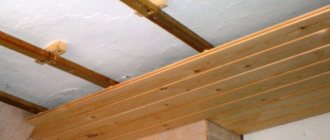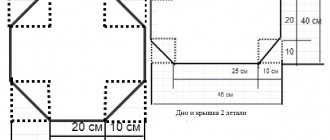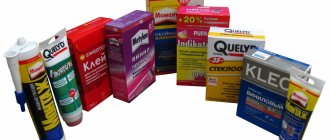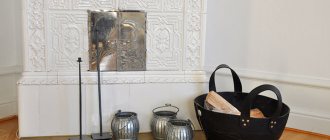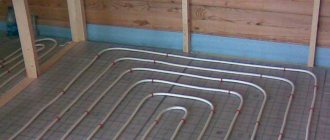Is it worth gluing
There are three ways to lay flooring:
- gluing to compounds offered in stores;
- flooring with the canvas secured with skirting boards;
- fastening with construction double-sided tape.
It is recommended to fix linoleum with glue if the room size is more than 20 square meters. Long-term guarantees are issued for glued materials. Felt material is also offered in a wide range.
It is necessary to glue the canvas if the room has large furniture that moves frequently. This will eliminate the risk of deformation of the floor covering. Thanks to gluing, the wear of the material can be minimized, so it will last longer. Even non-professionals can do this.
During the off-season, linoleum can stretch or shrink as it is affected by sudden changes in temperature and high levels of humidity. You can avoid such troubles if you attach the linoleum with glue.
It is necessary to apply glue at the joints of the panels, covering every centimeter. These areas need a strong connection, otherwise they will begin to lag.
What glue to glue linoleum with
What glue to glue linoleum with: how to glue and make a seam
One of the advantages of linoleum, thanks to which this finishing material enjoys real national popularity, is the ease of installation. Indeed, properly laid on any, but always well-prepared, level base, linoleum can serve for decades. True, discussions often arise on the topic of whether linoleum glue is overkill if this floor covering can be laid on the base as a single panel, securing the edges with baseboards.
Content
Not so long ago, if it was not possible to “get” linoleum of the required width, they bought whatever it was and glued the canvases to the base with PVA glue or Bustilat. Today, when you can choose a floor covering based on design, wear resistance, and width, the temptation is too great to buy a roll of linoleum of the optimal width and length, lay it in a couple of hours and admire the updated floor. At the same time, manufacturers insistently recommend laying linoleum with glue, and depending on the type and base of the coating, selecting one or another adhesive composition.
The use of glue when laying linoleum allows you to create a durable monolithic floor covering and neat, barely noticeable seams at the joints of the canvases
The use of glue allows you to create a durable monolithic floor covering, rigidly reinforced at each point of the floor base. During operation, the width of the joint between the canvases will not change, that is, the seam will never come apart. No bulges from chair legs appear on the surface of a rigidly glued elastic floor covering, and when furniture is moved, there is no wave characteristic of loosely laid linoleum. Finally, the floor will last you 40-50% longer, maintaining its beautiful appearance, if it is laid with linoleum glue: its price, by the way, is tens of times lower than the cost of the floor covering itself.
Thus, thanks to the use of special adhesives, a strong connection between the linoleum base and the floor is ensured, and a strong seam is created at the junction of two strips of coating. Deciding which glue to glue linoleum with depends on the type of coating base and the installation stage. There are three types of adhesives for laying linoleum:
Dispersion adhesive is aqueous suspensions and solutions of acrylic or carboxymethylcellulose with the addition of chalk, latex and other special additives. This group of adhesives is almost odorless, non-toxic, they are also not waterproof and lose their adhesive ability if they freeze during transportation. Dispersion adhesive can be used when laying linoleum on different substrates: fabric, felt, polyurethane foam. The most common types of dispersion adhesive:
- Acrylate - suitable for laying heterogeneous and homogeneous linoleum in rooms with moderate and high traffic.
- Bustilate is an adhesive based on carboxymethylcellulose, latex and chalk, ideal for gluing insulated linoleum on a felt base.
- Gumilax is an adhesive based on latex and rubber, used when laying natural linoleum.
- Conductive dispersion adhesive is used in conjunction with antistatic floor coverings when laying them in rooms with a large number of electronic equipment.
- Dispersion and bitumen mastics for laying linoleum on a fabric basis.
All types of dispersion adhesives and mastics are applied to the floor using a notched trowel in an even layer
All types of dispersion adhesives and mastics are applied to the floor using a notched trowel in an even layer 0.6-0.7 mm thick and the linoleum is immediately laid. In this case, the consumption of glue for linoleum, depending on its type, is 200-500 g/m2. Floor coverings based on mastics and bitumen-based adhesives are laid 15-20 minutes after applying the composition to the floor.
Reaction adhesive is a complex chemical compound based on polyurethane and epoxy resin. Reacting with the linoleum base, it firmly adheres it to the floor surface, providing a very rigid intermediate layer that is waterproof, durable, and resistant to mechanical stress. Reaction adhesive is good for laying fabric-based linoleum and is indispensable when laying commercial linoleum in industrial premises. It has the highest bonding ability, but is not free from disadvantages, including
- high cost compared to dispersion adhesives;
- sharp pungent odor;
- explosion hazard;
- fire hazard.
Laying linoleum using reaction adhesive is called cold welding due to the chemical reaction that occurs, and depending on the concentration of the adhesive composition, three types are distinguished - A, C and T. Depending on the type of linoleum, the age of the floor and the nature of the upcoming operation, the appropriate glue is selected for cold welding of linoleum of one type or another.
Reaction adhesive of the thinnest consistency is suitable for gluing strips of commercial or hard household new linoleum at joints, provided that the pieces of material are already firmly laid on the adhesive and the pattern is well aligned. The result is a thin, almost invisible transparent seam that can only be detected by touch.
The use of A-type cold welding allows you to obtain an almost invisible transparent seam that can only be detected by touch.
Reaction glue of a fairly thick consistency, intended for repairing linoleum that is no longer new. As a rule, during the operation of loosely laid linoleum, cracks with a width of 0.3-0.5 to 3-4 mm can form at the joints, which the thick adhesive composition not only glues the edges of the material, but also practically creates a strip of new linoleum in place of the crack.
Thus, C-type cold welding is used to produce wide, thick welds.
This type of cold welding compound is used by professionals as an adhesive for polyester-based PVC linoleum joints.
When laying thick commercial linoleum or when performing appliqués and other artistic design techniques, it is not always possible to use glue to create a neat waterproof layer between the parts and then the hot welding method is used.
Bonding linoleum strips using hot welding
The hot welding operation is performed only by professionals using a construction hair dryer with a special nozzle into which a welding cord corresponding to a specific type of linoleum is placed. The material sheets are tightly fitted to each other, and a welding cord is placed in the narrow slot between them. Under the influence of high temperatures of 300-400°C, the cord melts and connects the linoleum parts with an even, strong seam.
Hot welding is not used to join pieces of soft household linoleum; in this case, cold welding is sufficient to create invisible thin seams. Despite the aggressive chemical activity, if the necessary safety standards are observed, the cold welding method is easy to perform, provides amazing results when laying floor coverings and reveals the good old linoleum in our homes from a new and unexpected side.
Did you like the article? share it on social media. networks
How to glue linoleum to the floor
Despite the many modern flooring materials, linoleum remains in demand and is loved by consumers. They appreciate the wide selection of this material, quality, ease of maintenance and quite affordable price. It's no secret that some new floor coverings are not at all designed for rooms with high traffic, high humidity and other unfavorable operating conditions. Even in these “inconvenient” rooms, linoleum remains at its best and serves faithfully for many years. Having chosen this floor covering, you will definitely be faced with the question: “How to glue linoleum to the floor and is it necessary to do it at all?”
Why is it better to choose an adhesive installation method?
Experts advise laying linoleum without gluing only in small rooms (up to 10 sq. m.). If you do not have enough width of one panel and have to lay several strips, then the material also definitely needs to be glued.
Even in small rooms, linoleum that is laid in one piece can become deformed. Over time, pits may appear from the legs of moved furniture and chairs, as well as unsightly waves. At the thresholds and at the junctions of individual panels, cracks that spoil the appearance of the floor are formed, which are a consequence of the material drying out over time.
Over time, loose linoleum begins to wrinkle unsightly
A non-adhesive coating is easier to accidentally damage during operation. Experts say that the service life of linoleum glued to the base is 40% higher than that installed using non-adhesive methods.
The only drawback of this method of laying linoleum is that the panels are very difficult to dismantle if necessary, but if you choose a high-quality coating and carry out the installation according to all the rules, you are unlikely to repair the floor in your home again soon.
Properly laid high-quality linoleum will delight you for many years
How to glue linoleum
The choice of adhesive depends entirely on the type of linoleum you are going to install, as well as the type and condition of the surface of the existing floor in your home. When deciding which glue to use to glue linoleum, carefully study the information provided by the manufacturer on the label and choose the composition that is suitable for your type of floor.
Adhesive for linoleum is available in two types:
- dispersive;
- reaction (cold welding).
Dispersion adhesive for linoleum
The composition of adhesives in this group includes:
- acrylic solution;
- cellulose glycolic acid;
- water suspension.
This type of glue is used for continuous gluing of panels. It is environmentally friendly, non-toxic and, importantly, elastic. The main disadvantage of this glue is its instability to low temperatures. Transporting or storing dispersion adhesive at low temperatures makes it unsuitable for gluing. In addition, this glue has low water resistance.
Dispersion acrylic adhesive
Regardless of the type of base, the floor is carefully leveled before laying linoleum. Dispersion adhesive is applied to the floor with a notched trowel. The layer thickness should be 0.5–0.6 mm.
The panels are laid on the floor with glue applied
The panels are laid on glue and carefully pressed. Using a rubber roller, excess air is squeezed out from the middle of the panel to the edges.
Rubber roller for smoothing linoleum
On average, the consumption of such glue is 200–500 g/m2, depending on its type. The manufacturer indicates on the packaging the consumption per square meter and gives recommendations for installation.
Dispersion type adhesives are divided into groups:
- Bustilate - used for gluing thick linoleum on an insulated base such as felt;
- Acrylate – indispensable for gluing coatings in high-traffic areas;
- Gumilax - intended for installation of natural material;
- Bitumen mastic - used for fabric-based coating;
- Conductive - for rooms with a large number of electrical equipment.
Reaction glue
This type of glue is transparent, has a pungent odor and is quite toxic. The substance is flammable and explosive. Available in three grades: A, C and T. Depending on the brand, the glue has a different consistency in density. These are quite expensive compounds that are used to process the joints of panels.
Reactive adhesive upon contact enters into a chemical reaction, dissolving the linoleum material. This process is sometimes called cold welding.
Type A glue has a liquid consistency. It is used to process the seams of new material. Gives a strong and transparent seam that can only be found by touch. This adhesive is used for household and commercial linoleum with a solid base.
Cold welding of linoleum joints
The algorithm for type A glue is quite simple:
- The gap is cleaned of dust and dried.
- Painting tape is glued along the entire length of the crack.
- At the junction, the tape is carefully cut through.
- The glue is squeezed into the gap.
- After 20 minutes, the tape is removed. Complete hardening occurs within an hour.
- Easy care - to keep the floor clean, just rinse it with warm water;
- Wear resistance and strength - it will not tear after contact with heavy furniture that will be regularly moved on it;
- Antistatic – dust and small debris do not stick to the floor surface;
- Does not fade from direct sunlight - it can be safely installed in rooms on the sunny side of the house;
- Increased flexibility - does not break, does not lose properties after changing the air temperature in the room;
- Affordable price - many types offer a wide range of prices from very cheap to expensive;
- Possibility to install a heated floor system under the linoleum.
Experts recommend making the seams as short as possible, no longer than 50–70 cm. When gluing joints, be sure to protect your hands with gloves and wear a respiratory mask.
Type C glue is used to restore broken seams on old linoleum. It has the consistency of thick sour cream. After its application, a wide seam is formed that connects adjacent panels. This type of reaction adhesive is used for the restoration of linoleum with cracks up to 4 mm wide.
Procedure for laying linoleum
T-type adhesive is intended for gluing joints of PVC linoleum based on polyester. This type of glue is used by professionals.
Important! Do not allow glue to get on the linoleum. If glue does drip, you cannot wipe it off with a rag, but you must wait until it has completely hardened and then carefully cut it off with a sharp construction knife. However, the trace, unfortunately, will still remain. To insure against this trouble, you must always hold the tube above a rag.
We told you how and how to glue linoleum. The complete installation process for this flooring is shown in the video.
Video: laying linoleum with your own hands Do you need to glue linoleum to the floor: how to make the right decision
Linoleum is a universal material used as flooring in apartments, houses and commercial premises. It is quite durable - a high-quality product can last up to 15-20 years. Ease of care and maintenance makes linoleum one of the most popular flooring materials.
Is it necessary to glue linoleum during installation? There are two opinions regarding this issue.
Some experts believe that this is not necessary, while others refute the theory. First of all, the matter concerns large areas where the surface is subject to significant mechanical loads.
Factors influencing the choice of linoleum installation method
Difficult choice - to glue or not
Linoleum is divided into commercial, semi-commercial and household. In residential areas the latter type is usually used.
First of all, it is distinguished by a larger selection of design options available to the average consumer. In addition, he is attractive in other ways.
The flooring is made in the form of a layer cake
Advantages of household flooring:
But it also has disadvantages - increased fragility at sub-zero temperatures and susceptibility to alkalis, solvents and fats. If it comes into contact with a hot object, it can easily melt.
When to glue linoleum
under linoleum heated floor system.
But it also has disadvantages - increased fragility at sub-zero temperatures and susceptibility to alkalis, solvents and fats. If it comes into contact with a hot object, it can easily melt.
When to glue linoleum
under linoleum heated floor system.
But it also has disadvantages - increased fragility at sub-zero temperatures and susceptibility to alkalis, solvents and fats. If it comes into contact with a hot object, it can easily melt.
When to glue linoleum
Warm floors under linoleum are no longer so much a dream as a necessity” href=”https://shkolapola.ru/teplyi/218-teplye-poly-pod-linoleum”>under linoleum heated floor system.
But it also has disadvantages - increased fragility at sub-zero temperatures and susceptibility to alkalis, solvents and fats. If it comes into contact with a hot object, it can easily melt.
When to glue linoleum
linoleum without glue is not easy. It will have to be leveled for a long time and carefully to eliminate bubbles. Here, using glue is the only correct solution.
In small rooms it is easier to install it. There you can do without glue, but with reliable fastening around the perimeter. But this is not a guarantee that the surface will remain smooth forever.
What glue is used for installation
linoleum without glue is not easy. It will have to be leveled for a long time and carefully to eliminate bubbles. Here, using glue is the only correct solution.
In small rooms it is easier to install it. There you can do without glue, but with reliable fastening around the perimeter. But this is not a guarantee that the surface will remain smooth forever.
What glue is used for installation
linoleum without glue is not easy. It will have to be leveled for a long time and carefully to eliminate bubbles. Here, using glue is the only correct solution.
In small rooms it is easier to install it. There you can do without glue, but with reliable fastening around the perimeter. But this is not a guarantee that the surface will remain smooth forever.
What glue is used for installation
Glue for linoleum is an indispensable attribute of any installation process” href=”https://shkolapola.ru/elast/linoleym/skleivanie/274-klej-dlya-linoleuma”>linoleum without glue is not easy. It will have to be leveled for a long time and carefully to eliminate bubbles. Here, using glue is the only correct solution.
In small rooms it is easier to install it. There you can do without glue, but with reliable fastening around the perimeter. But this is not a guarantee that the surface will remain smooth forever.
What glue is used for installation
Important! You cannot glue linoleum around the perimeter or only in certain areas. Over time, they will be visually different from those without glue. In addition, possible bubbles will have nowhere to run.
What to do if linoleum starts to peel off
The most common defect is a molded piece of linoleum
It may happen that after some time the linoleum comes unstuck and has to be repaired. What to do in this case? This happens if low-quality glue was initially purchased or the technology was not followed.
If trouble has already happened and swelling has formed, then they can be eliminated with the help of punctures. They are made with a sharp thin awl and release the air from the bubble.
After which this place is ironed through a sheet of clean white paper with a hot iron. The glue melts and the two surfaces are reconnected.
How to seal linoleum if it comes apart at the joints? According to the rules, joints are connected using cold welding, but sometimes the technology is violated. And then there is a high probability that detachment will occur there.
This situation can be corrected quite simply - the joints are cleaned and degreased with alcohol or gasoline. After which the linoleum is carefully folded back and glue is applied under it. Next, the joints are welded using the cold welding method.
Technology for gluing linoleum to the floor
Laying linoleum on glue with your own hands
Household linoleum. used in residential premises, as a rule, it is glued using dispersion adhesive. Which is divided into several types and is used depending on the type of flooring and operating conditions.
- Gumilax - suitable for natural materials, the product contains rubber or latex;
- Acrylate glue - used where there will be hanging traffic, presumably in the kitchen or hallway;
- Bustilate - intended for felt-based linoleum. Contains chalk, latex and carboxymethylcellulose.
The glue must be used strictly in accordance with the instructions. Be sure to wear rubber gloves. Whether it is necessary to glue linoleum to the floor is decided before the renovation begins. In accordance with this, the foundation will be prepared.
To carry out the work you will need the following tools:
- Notched spatula;
- Double-sided tape;
- Construction knife;
- Metal ruler;
- Roulette;
- Roller or cork board.
Important! Before gluing linoleum, it is important to thoroughly clean the base from dirt and dust. Over time, the flooring takes on the shape of the floor and the smallest defects begin to appear - tubercles and cracks.
Stages of laying linoleum
Household linoleum. used in residential premises, as a rule, it is glued using dispersion adhesive. Which is divided into several types and is used depending on the type of flooring and operating conditions.
- Gumilax - suitable for natural materials, the product contains rubber or latex;
- Acrylate glue - used where there will be hanging traffic, presumably in the kitchen or hallway;
- Bustilate - intended for felt-based linoleum. Contains chalk, latex and carboxymethylcellulose.
The glue must be used strictly in accordance with the instructions. Be sure to wear rubber gloves. Whether it is necessary to glue linoleum to the floor is decided before the renovation begins. In accordance with this, the foundation will be prepared.
To carry out the work you will need the following tools:
- Notched spatula;
- Double-sided tape;
- Construction knife;
- Metal ruler;
- Roulette;
- Roller or cork board.
Important! Before gluing linoleum, it is important to thoroughly clean the base from dirt and dust. Over time, the flooring takes on the shape of the floor and the smallest defects begin to appear - tubercles and cracks.
Stages of laying linoleum
Household linoleum. used in residential premises, as a rule, it is glued using dispersion adhesive. Which is divided into several types and is used depending on the type of flooring and operating conditions.
- Gumilax - suitable for natural materials, the product contains rubber or latex;
- Acrylate glue - used where there will be hanging traffic, presumably in the kitchen or hallway;
- Bustilate - intended for felt-based linoleum. Contains chalk, latex and carboxymethylcellulose.
The glue must be used strictly in accordance with the instructions. Be sure to wear rubber gloves. Whether it is necessary to glue linoleum to the floor is decided before the renovation begins. In accordance with this, the foundation will be prepared.
To carry out the work you will need the following tools:
- Notched spatula;
- Double-sided tape;
- Construction knife;
- Metal ruler;
- Roulette;
- Roller or cork board.
Important! Before gluing linoleum, it is important to thoroughly clean the base from dirt and dust. Over time, the flooring takes on the shape of the floor and the smallest defects begin to appear - tubercles and cracks.
Stages of laying linoleum
We choose household linoleum for laying on a concrete base” href=”https://shkolapola.ru/elast/linoleym/raznovidnosti/201-bytovoj-linoleum”>Household linoleum. used in residential premises, as a rule, it is glued using dispersion adhesive. Which is divided into several types and is used depending on the type of flooring and operating conditions.
- Gumilax - suitable for natural materials, the product contains rubber or latex;
- Acrylate glue - used where there will be hanging traffic, presumably in the kitchen or hallway;
- Bustilate - intended for felt-based linoleum. Contains chalk, latex and carboxymethylcellulose.
The glue must be used strictly in accordance with the instructions. Be sure to wear rubber gloves. Whether it is necessary to glue linoleum to the floor is decided before the renovation begins. In accordance with this, the foundation will be prepared.
To carry out the work you will need the following tools:
- Notched spatula;
- Double-sided tape;
- Construction knife;
- Metal ruler;
- Roulette;
- Roller or cork board.
Important! Before gluing linoleum, it is important to thoroughly clean the base from dirt and dust. Over time, the flooring takes on the shape of the floor and the smallest defects begin to appear - tubercles and cracks.
Stages of laying linoleum
- Adhesive for linoleum on a concrete floor How to glue linoleum to a concrete floor? 4 ways to choose In small spaces, it is enough to fix…
- How to glue linoleum to the floor What glue to glue linoleum with: how to glue and make a seam One of the advantages of linoleum, thanks to which...
- Glue for linoleum on a wooden floor Types of adhesive for linoleum on a wooden floor Repair of the base ends with laying the floor covering. Depending...
- How to correctly lay linoleum on a concrete floor How to lay linoleum on a concrete floor How to correctly lay linoleum on a concrete floor: let’s look at everything...
Installation methods
This material is soft and flexible. To properly glue linoleum, you need to focus on what kind of floor in the room. If you don’t know what to glue linoleum to, then read the important information.
To achieve effective results, the basis must be:
- Durable: individual pieces of concrete or peeling wood floorboards must be excluded;
- Dry: if the base is wet, it is impossible to carry out the work efficiently;
- Smooth: differences and unevenness will be visible on the finished floor surface;
- Clean: if there is debris under the linoleum, the appearance of the floor will suffer.
PVC products can be laid on various substrates if they meet the basic requirements. To glue linoleum efficiently, the room temperature must exceed 18 degrees, and the air humidity level must be up to 70%, but no more.
If you are carrying out renovation work in winter, then let the rolls lie in the room for several days so that they adapt to the conditions.
How to glue correctly: step-by-step instructions
So, when you're ready to start laying linoleum, follow these simple tips.
Preparing the base floor
If you are gluing the material to concrete, then preparing the base involves checking for unevenness. If they are, then you need to eliminate them using a cement mixture or putty. In the case of wooden flooring, it is necessary to strengthen creaking boards and eliminate differences in the plane. You need to get rid of traces of old paint and varnish coatings, because they will not allow the canvas to adhere well to the surface. This way you can install the material correctly.
Linoleum fitting
To adjust the material to the size of the room, special knives are used. You can also use a stationery knife, but the work process is slightly more complicated. Bend the linoleum slightly along the wall and leave a mark on its reverse side. The calculation must be carried out so that there is a gap of 3 mm between the wall surface and the material. Leave the same marks every 20 cm. Using a ruler, connect these marks and cut a neat, even strip.
Gluing
You can glue the coating with glue or double-sided tape if we are talking about an area of more than 20 square meters. Most often, a variety of adhesive compositions are used. It is necessary to carefully lubricate the floor surface with the selected glue using a spatula. After this, the canvas is pressed against it and carefully smoothed. You need to go over every square centimeter to get rid of the air under the coating, because otherwise it will not be securely fixed.
How to glue the edge
The appearance of the surface will deteriorate if the edges and seams are poorly glued. To glue the edges, you should use bustylate. Such a composition that gets on the material cannot spoil the coating, because it is transparent.
Apply bustilate to the floor, bending the edge of the linoleum. Press the edge butt together and smooth it out to get rid of any air. Place a weight on top to secure the material. After the bustilate has dried, attach the threshold strip or install the baseboard.
You can fix the joints if you use adhesive compounds that cause chemical reactions. Cold welding can be used to seal seams. One tube allows you to treat a considerable amount of territory. This sealant is very beneficial. If there is a substrate, it will be additionally insulated.
This technology is simple and understandable. Painting tape is attached to the joint and cut along the seam. After this, the glue is squeezed out along the joint and wait until it hardens. Then the strip is removed along with the remaining product.
Calculation of material and first laying of linoleum
You should purchase linoleum in the required quantity, which will be equal to the area of the room being decorated with a small margin added to the value (about 10%, 10-20 cm on each side of the measured piece). It’s easy to find out the area of the room - measure the length and width of the walls with a tape measure, and multiply the values.
It is important to remember that the walls in a room may be uneven - in fact, in rare cases, rooms have ideal geometry. All these nuances must be taken into account when calculating the amount of coverage
Calculation of room area
Also, the store immediately purchases the missing tools and adhesive composition (for the adhesive installation method). If the linoleum will be fixed with skirting boards, then they will also be purchased immediately. The color should be in harmony with the topcoat and other elements of the interior design. To join linoleum between two rooms, thresholds are purchased, which can be made of wood, aluminum and other materials.



